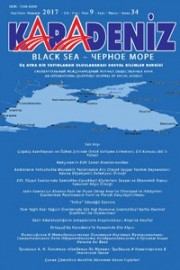XVI. Yüzyıl Sonlarında Samtskhe-Cavakheti Köylerinin Sosyal ve Ekonomik Yapısı: Sakuneti Köyü Örneği
The Social and Economic Structure of Samtshke-Javakheti Villages at the End of XVI Century: The Sample of Sakuneti Village
Author(s): Iasha BekadzeSubject(s): Agriculture, Middle Ages, Modern Age, Demography and human biology, Economic development, The Ottoman Empire, Socio-Economic Research
Published by: Kültür Ajans Tanıtım ve Organizasyon
Keywords: Samtskhe-Javakheti; Akhaltsikhe Municipality; Childir Province; Ahiska Sanjak; Atskhuri Region; Sakuneti;
Summary/Abstract: The village of Sakuneti was connected to the Samtskhe Saatabago for 312 years (1266- 1578) and 250 years (1579- 1829) to the Childir Province of Atskhuri region of Ottoman state. Today this village is within the borders of Akhaltsikhe Municipality, the Republic of Georgia. In this research, we made some determinations about the agrarian structure of the village based on Ottoman State recordings called “Defter-i Mufassal Vilâyet-i Gürcistân” dated by 1595 TTD and 1003 year by Hijri Calendar. The etymology, brief history, geographic position, and religious affiliations of Sakuneti village are also mentioned. At this date, the population of Sakuneti Village consisting of 17 families was 136 people. Most of them were not Muslims. According the recordings, it is possible to say that the means of existence of the villagers depended on farming and agriculture. Wheat and barley were the most common means of income, and viniculture and horticulture was common. According to the recordings, there was apiculture and ovine breeding. In addition, mills were operating in the village, too.
Journal: Karadeniz Uluslararası Bilimsel Dergi
- Issue Year: 2017
- Issue No: 34
- Page Range: 42-84
- Page Count: 43
- Language: Turkish

